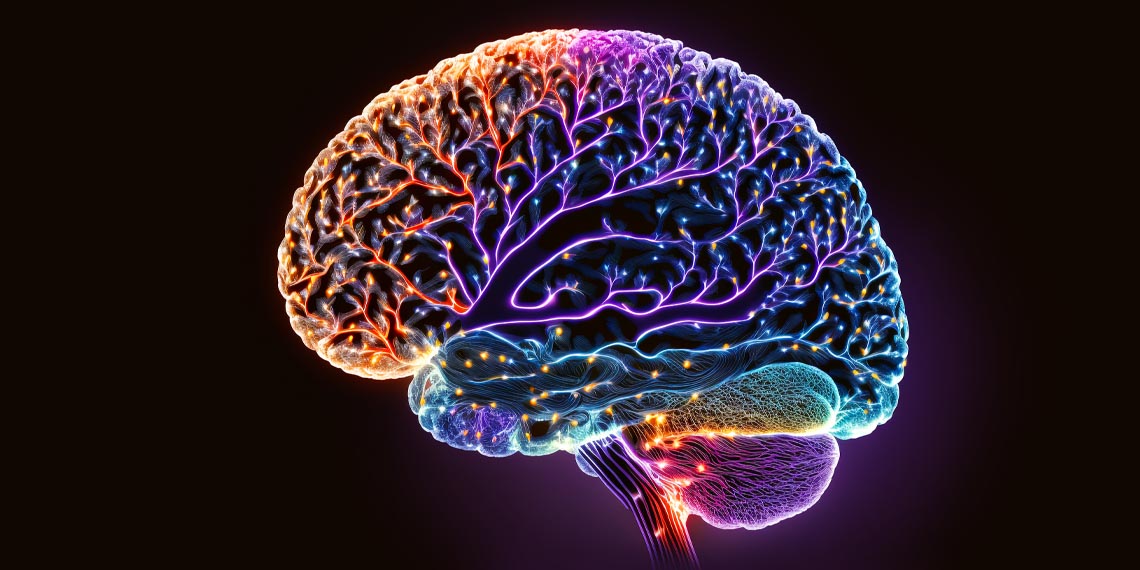A recent study on individuals with post-traumatic stress disorder (PTSD) suggests that dissociation may not stem from excessive emotional suppression, as previously thought. The study, published in Psychopharmacology, explored how ketamine—a drug known to induce dissociative symptoms—affects brain connectivity between regions involved in emotion processing.
Surprisingly, administering ketamine did not increase resting-state functional connectivity between the amygdala and the medial prefrontal cortex (mPFC), a brain region central to regulating emotional responses. This finding challenges the assumption that dissociation arises from heightened emotional control (emotion overmodulation) and suggests that alternative mechanisms may be involved.
Dissociation is a psychological state in which a person experiences a disconnection from their thoughts, feelings, memories, or sense of identity. It is believed to act as a defense mechanism in response to trauma or overwhelming stress, allowing the mind to separate from painful experiences.
Common forms of dissociation include depersonalization (feeling detached from one’s body) and derealization (feeling detached from one’s surroundings). In severe cases, dissociation can lead to memory gaps or a fragmented sense of self. Many individuals with dissociation report feeling numb, out of touch, or as if they’re watching themselves from a distance.
In recent decades, scientists have discovered that ketamine, a drug primarily used as an anesthetic, can also produce dissociative symptoms at lower doses. Dissociative symptoms induced by ketamine are similar to those experienced by individuals with mental health disorders such as PTSD.
PTSD is usually characterized by emotion undermodulation (difficulty controlling emotions), which is associated with specific brain activity patterns. However, PTSD with dissociative symptoms is characterized by emotion overmodulation—excessive suppression or control over one’s emotions. Brains of individuals with emotion overmodulation show a resting pattern of neural activity marked by increased functional connectivity between the medial prefrontal cortex (a region responsible for decision-making and emotional regulation) and the amygdala (a region involved in processing emotions).
Study author Sarah K. Danböck and her colleagues wanted to examine the effects of ketamine on resting-state functional connectivity between the amygdala and medial prefrontal cortex in individuals with PTSD. They sought to determine whether inducing dissociative symptoms using ketamine would increase functional connectivity between these regions, indicating emotion overmodulation. Functional connectivity refers to the level of communication between two brain regions.
The study involved 26 adults with PTSD, who were not currently engaged in trauma-focused therapy. Participants were randomly divided into two groups: one group received a ketamine infusion (0.5 mg per kg over 40 minutes) while undergoing functional magnetic resonance imaging (fMRI), and the other received an infusion of midazolam while undergoing the same neuroimaging procedure. Midazolam, a fast-acting medication, is commonly used for anxiety relief, sedation, or sleep induction before medical procedures.
Contrary to researchers’ expectations, ketamine did not increase resting-state functional connectivity between the mPFC and amygdala. In fact, there was a noticeable decrease in connectivity between these regions in participants who received ketamine compared to those who received midazolam. This reduction in connectivity was most pronounced between the 10- and 20-minute mark of the infusion, suggesting that ketamine may actually disrupt rather than enhance the fronto-limbic communication thought to underlie emotion overmodulation.
Given that increased connectivity between the mPFC and amygdala during rest is often considered an indicator of emotion overmodulation (or heightened emotional control), the absence of such an increase alongside ketamine-induced dissociative symptoms suggests that dissociation may not necessarily be related to excessive emotional suppression. Instead, the findings imply that dissociation might sometimes be accompanied by deficient emotion regulation, where the brain shows a weakened capacity to manage emotional responses.
“Altogether, our findings suggest that dissociation may not necessarily include downregulation of negative emotions mediated by fronto-limbic hyperconnectivity (emotion overmodulation). Instead, it might, in some instances, also include deficient emotion regulation mediated by fronto-limbic hypoconnectivity,” the study authors concluded.
The study adds to scientific understanding of the neural basis of dissociative symptoms. However, it is important to note that the research involved a very small group of participants. Because of this, only very strong effects would be detected, and the study might have missed other effects that were not strong enough to register in this small sample. Further research is needed to explore dissociation’s underlying mechanisms across different contexts and to refine treatments for PTSD patients with dissociative symptoms.
The paper, “Effects of a dissociative drug on fronto‑limbic resting‑state functional connectivity in individuals with posttraumatic stress disorder: a randomized controlled pilot study,” was authored by Sarah K. Danböck, Or Duek, Ziv Ben‑Zion, Nachshon Korem, Shelley L. Amen, Ben Kelmendi, Frank H. Wilhelm, Ifat Levy, and Ilan Harpaz‑Rotem.




